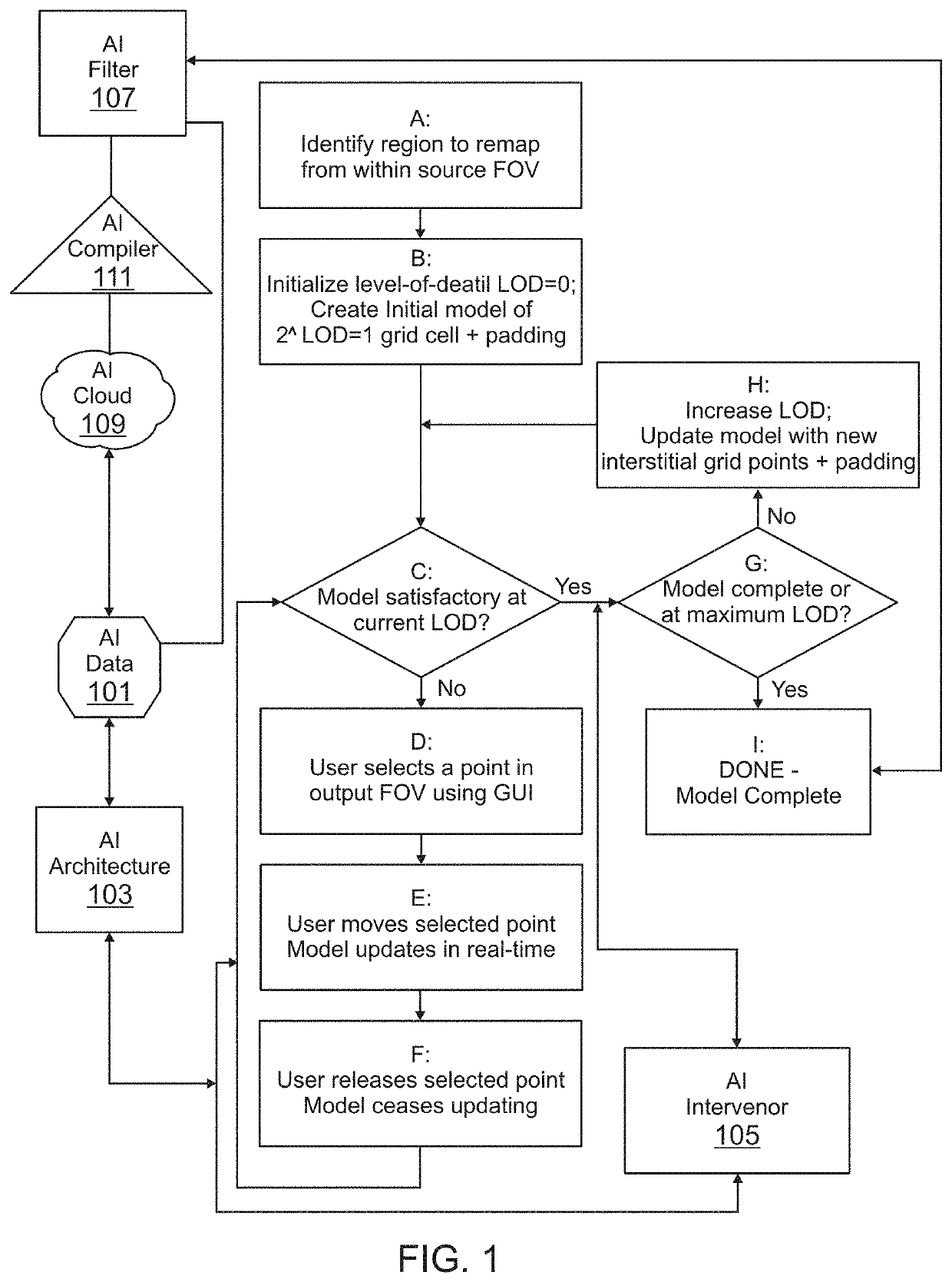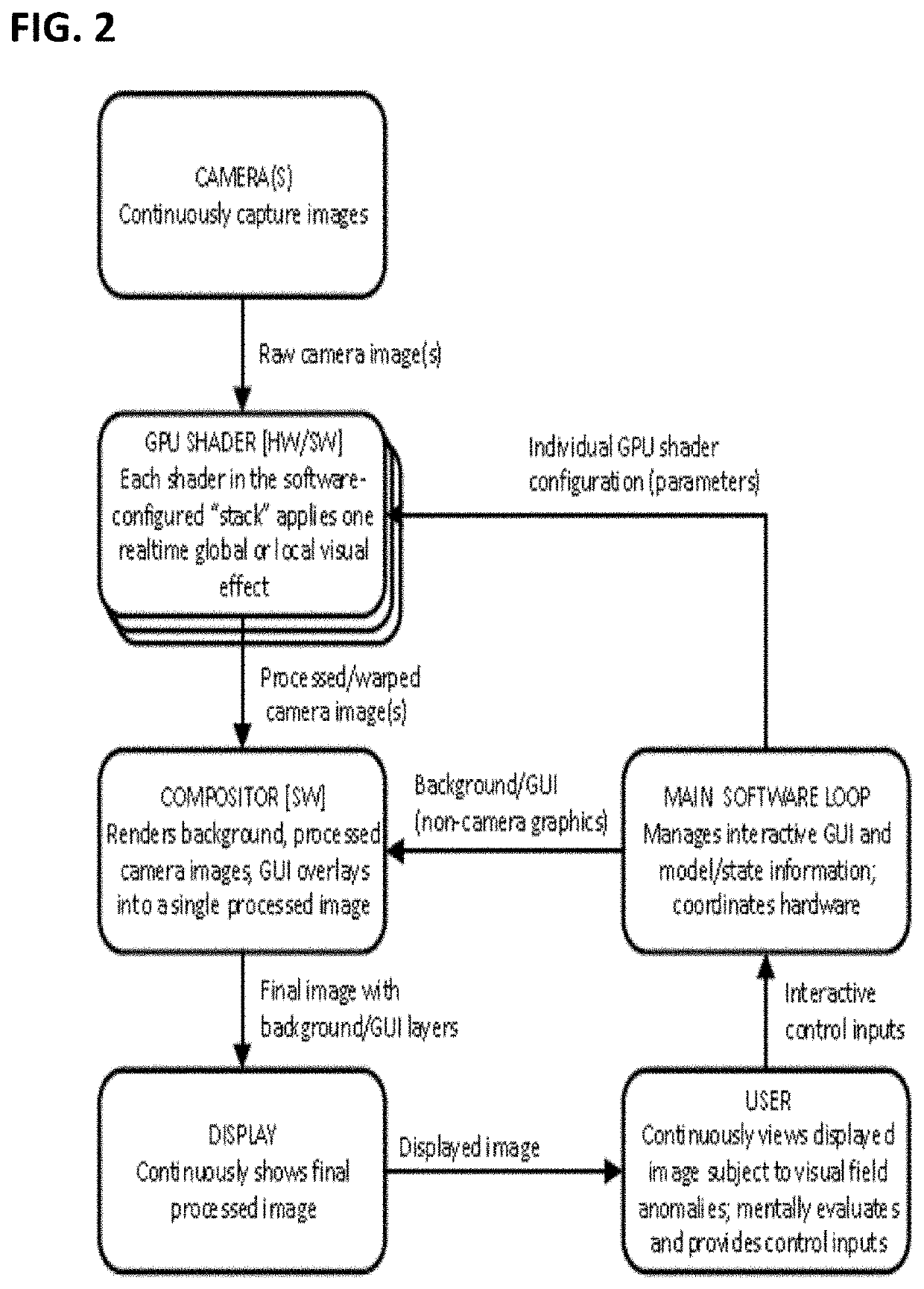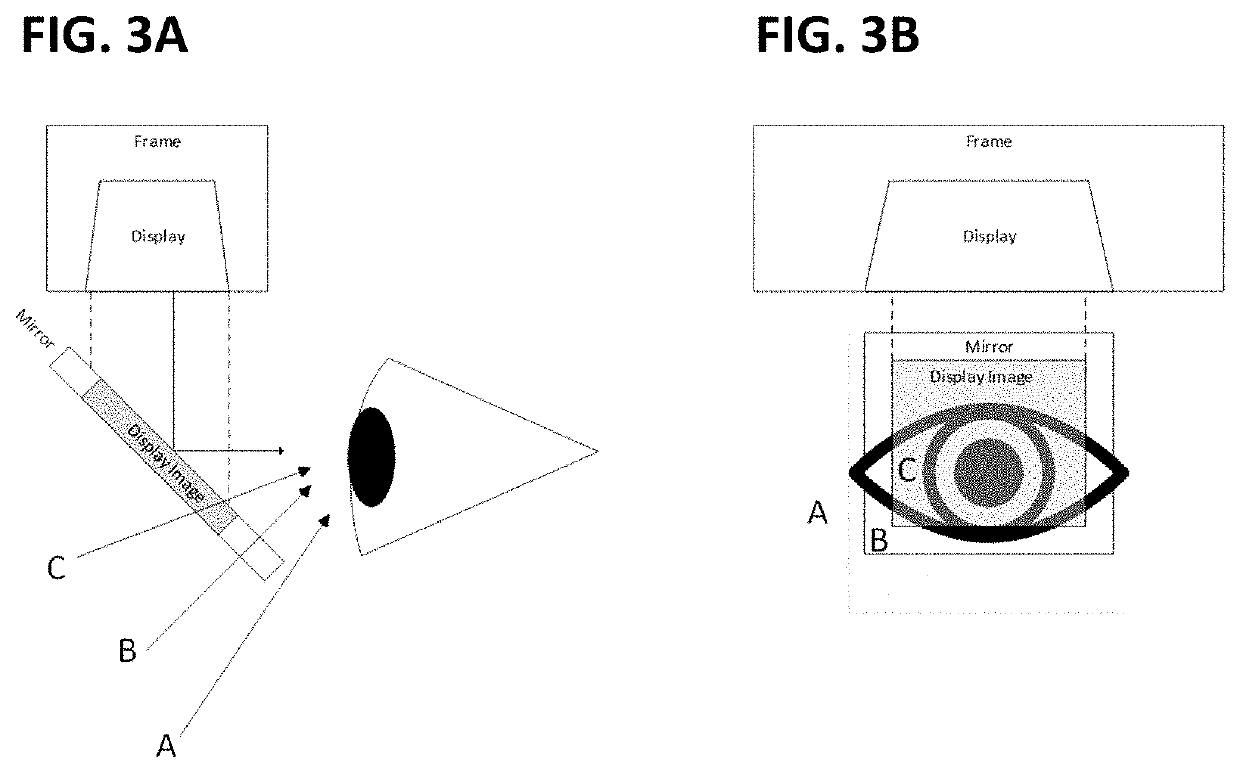Artificial intelligence enhanced system for adaptive control driven ar/vr visual aids
a visual aid and artificial intelligence technology, applied in the direction of instruments, user interfaces, computing models, etc., can solve the problems of loss of income, loss of ability to read, and non-critical choice of initial models, so as to improve visual adaptation, improve eccentric viewing capability, and increase reading speed
- Summary
- Abstract
- Description
- Claims
- Application Information
AI Technical Summary
Benefits of technology
Problems solved by technology
Method used
Image
Examples
Embodiment Construction
[0020]The present inventors have discovered that low-vision users can conform a user-tuned software set and improve needed aspects of vision to enable functional vision to be restored.
[0021]Expressly incorporated by reference as if fully set forth herein are the following: U.S. Provisional Patent Application No. 62 / 530,286 filed Jul. 9, 2017, U.S. Provisional Patent Application No. 62 / 530,792 filed Jul. 9, 2017, U.S. Provisional Patent Application No. 62 / 579,657, filed Oct. 13, 2017, U.S. Provisional Patent Application No. 62 / 579,798, filed Oct. 13, 2017, Patent Cooperation Treaty Patent Application No. PCT / US2017 / 062421, filed Nov. 17, 2017, U.S. patent application Ser. No. 15 / 817,117, filed Nov. 17, 2017, U.S. Provisional Patent Application No. 62 / 639,347, filed Mar. 6, 2018, U.S. patent application Ser. No. 15 / 918,884, filed Mar. 12, 2018, and U.S. Provisional Patent Application No. 62 / 677,463, filed May 29, 2018.
[0022]It is contemplated that the processes described above are imp...
PUM
 Login to View More
Login to View More Abstract
Description
Claims
Application Information
 Login to View More
Login to View More - R&D
- Intellectual Property
- Life Sciences
- Materials
- Tech Scout
- Unparalleled Data Quality
- Higher Quality Content
- 60% Fewer Hallucinations
Browse by: Latest US Patents, China's latest patents, Technical Efficacy Thesaurus, Application Domain, Technology Topic, Popular Technical Reports.
© 2025 PatSnap. All rights reserved.Legal|Privacy policy|Modern Slavery Act Transparency Statement|Sitemap|About US| Contact US: help@patsnap.com



